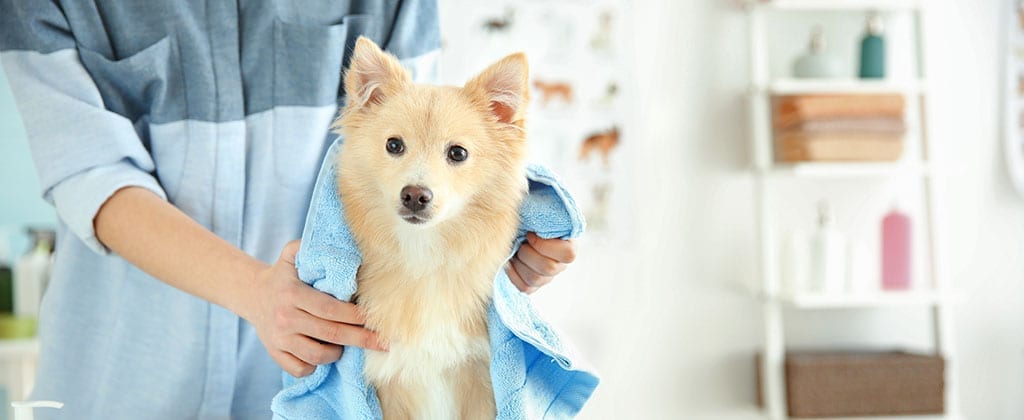How often should I bathe my pet?
This is a grooming question that I’ve gotten quite often in general practice, particularly when a family gets a new puppy. The answer depends on the pet.
For a pet with healthy skin, frequent baths can dry the skin. Most pets with healthy skin rarely require bathing. When I had a Labrador (and we lived along the river) she mostly only got a bath whenever she rolled in the mud. I probably wouldn’t bathe a pet with healthy skin more often than every 2 weeks, and even then I’d use an oatmeal shampoo to limit the risk of drying out the skin. Some pets have allergies and might benefit from weekly baths to limit the absorption of allergens across the skin. Pets that are prone to skin infections can benefit from special medicated (anti-fungal and/or antibacterial) shampoos during flare ups. Bathing with appropriate shampoos can be an important aspect of skin care for allergic pets, but for the average pet with healthy skin it is best not to over bathe.
How often should I trim my pet’s nails?
This depends in large part on the pet’s lifestyle. A dog who walks in the city on concrete will likely wear the toe nails much more than a couch potato who only goes into the backyard a few times per day to potty. As pets (or owners) get older they may not care to walk as far, and the pet’s nails won’t wear as well. I find this particularly common in senior, arthritic pets. Sometimes pet owners may be afraid to trim the nails of their old timers. As nails get longer they can place undue pressure on a dog’s toes. Senior cats with long nails might have toenails grow into their foot pads. Keep a watchful eye on your pet’s nails. If you are hesitant to trim the nails, a groomer or your veterinarian can help you. If you have a puppy or kitten, make sure you handle the feet often so that your pet knows it is okay to have humans touch their feet.
What is normal ear maintenance?
I once heard a dermatologist say that pet ears are like self-cleaning ovens. It’s true! For the vast majority of pets, ear cleaning should be a rarity, perhaps a couple times per year. Now, if your pet has allergies or particularly waxy ears, then regular cleaning could be part of your regime that you can discuss with your veterinarian. Regardless, Q tips should only be used on the outer portion of the ear where you can see the Q tip. Otherwise, pouring ear cleaner into the ear canal, squishing it around a bit and wiping it with a cotton ball is the safest method of home ear cleaning. Or, letting the pet shake the head to get the ear wash out is also acceptable. If a pet comes to the clinic with an ear infection, I will typically clean the ears in front of the owner, have them clean the ear several times at home during the treatment course, then have them come back after the last dose to make sure the infection is gone. If a dog is a swimmer, I will often suggest that the owner use a commercial ear wash after the pet swims. Most ear washes are acidifying and will decrease the chance of a yeast infection in wet dog ears.
NOTE: Consult your Veterinarian first to make sure my recommendations fit your special health needs.







Leave A Comment